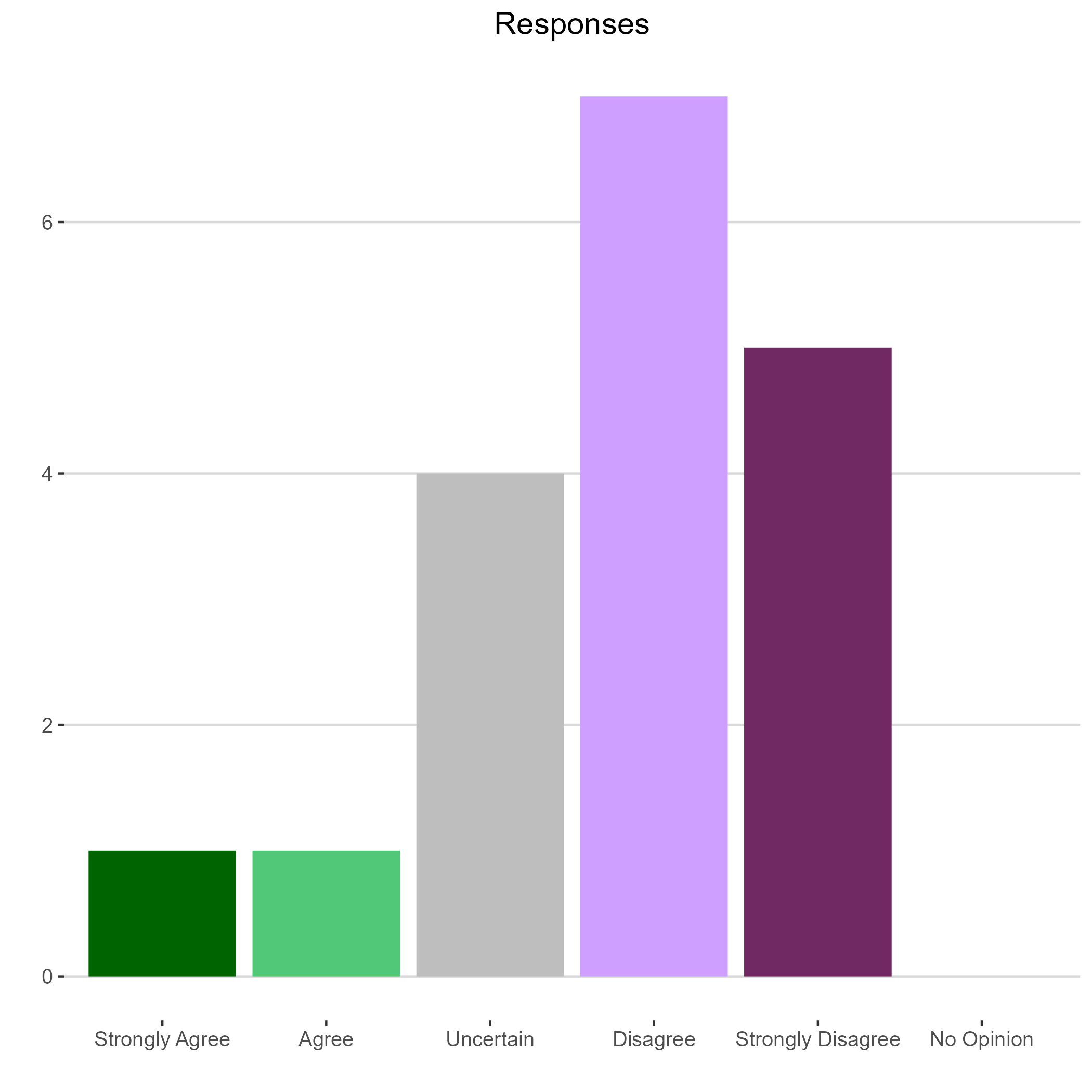| Jonathan Andreas |
Bluffton University |
Uncertain |
3 |
It depends on how nuclear power is encouraged. By the laws of supply and demand, more power supply would normally mean lower prices, and yet if supply is encouraged by guaranteeing them high prices (as has happened in America), then it obviously wouldn't work. |
| David Brasington |
University of Cincinnati |
Uncertain |
10 |
Larger supply could lead to lower prices, but the large fixed costs of a new source of energy would have to be passed on to customers, too |
| Ron Cheung |
Oberlin College |
Agree |
5 |
|
| Kenneth Fah |
Ohio Dominican University |
Agree |
8 |
|
| Vinnie Gajjala |
Tiffin Univeristy |
Agree |
8 |
|
| Will Georgic |
Ohio Wesleyan University |
Strongly Agree |
10 |
Perhaps not immediately, but over the long run increased supply should put downward pressure on prices |
| Bob Gitter |
Ohio Wesleyan University |
Agree |
6 |
Probably will but not immediately. They take a long time to get online. |
| Paul Holmes |
Ashland University |
Uncertain |
7 |
|
| Faria Huq |
Lake Erie College |
Uncertain |
5 |
Basic laws of demand and supply would suggest that in the face of increasing demand, supply needs to be increased in order to keep prices low. However, given the very large fixed costs associated with developing nuclear power generation facilities, there would need to be reliable projections of the specific energy needs of the data centers prior to investing in them. There should also be some form of commitment by the data centers to use the additional energy produced. |
| Michael Jones |
University of Cincinnati |
Strongly Agree |
9 |
|
| Charles Kroncke |
Mount Saint Joseph University |
Agree |
9 |
|
| Trevon Logan |
Ohio State University |
Agree |
8 |
|
| Joe Nowakowski |
Muskingum University |
Uncertain |
8 |
|
| Curtis Reynolds |
Kent State University |
Agree |
5 |
|
| Iryna Topolyan |
University of Cincinnati |
Agree |
8 |
|
| Ejindu Ume |
Miami University |
Agree |
6 |
|
| Rachel Wilson |
College Board |
Strongly Agree |
8 |
Nuclear power requires massive upfront capital and a long development horizon, making it politically challenging. However, its near-zero marginal cost of production offers significant long-term price stability. |






